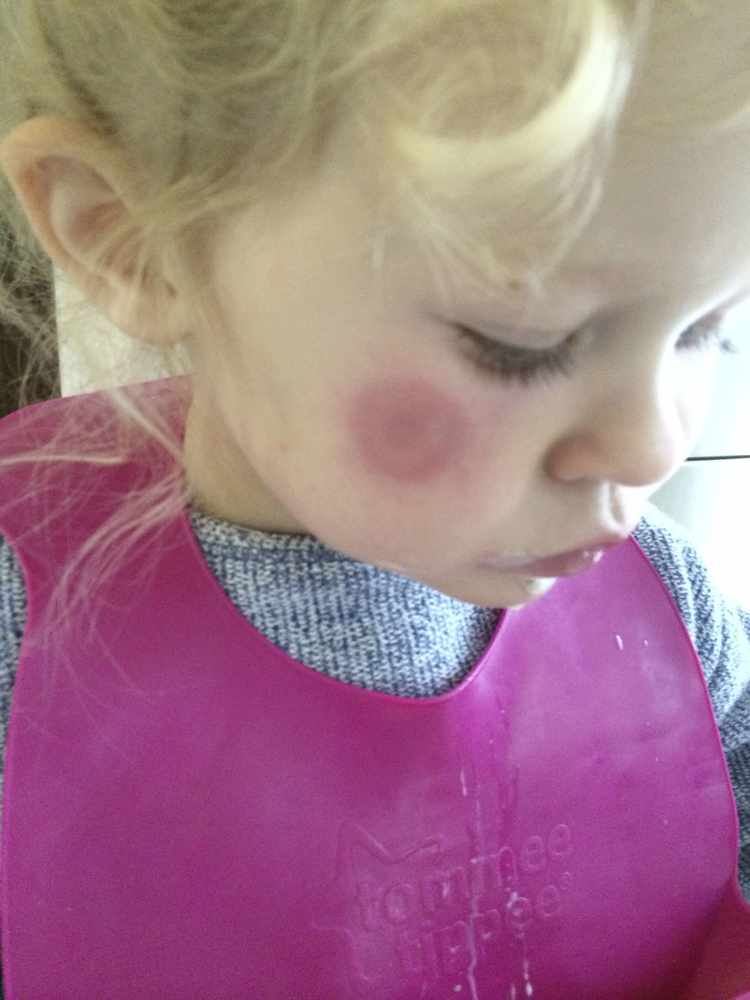Leanne Winter spoke out after it was reported in the JEP that an investigation was to be launched next year into the prevalence of Lyme-bearing ticks.
The investigation is to be carried out after an Islander was treated for a case of the disease, which may have been acquired in Jersey.
All previous cases diagnosed in the Island were acquired abroad.
While on holiday in Tuscany, Ms Winter’s two-year-old daughter Xanthe was bitten on her face by an insect which they believed to be a mosquito.

However, two weeks later, after they had returned to the Island, the bite on Xanthe’s face had developed into a ‘bullseye’ rash.
Ms Winter said that she took her daughter to the doctor after her symptoms worsened and she was given antibiotics.
But the GP was not certain that the rash had been caused by a tick bite.
‘It did not enter our mind that it could have been a tick bite,’ she said.
‘It did not occur to us that there would be ticks there.
‘There is a misconception that you have to be trekking through long grasses or woodland areas but you do not need to be deep in the forest or woodland.
‘The doctor did mention tick bites and I went home and went straight to my computer and the photos that came up looked like what she had, so I was worried that she wasn’t being treated for Lyme disease specifically.’
The 38-year-old said that her daughter’s symptoms continued over the course of last week and she had to be treated at the Hospital on Saturday because she was so unwell.
However she was discharged the following day and given a three-week course of antibiotics and she appears to be making a full recovery.
Both Ms Winter and her partner have been prescribed antibiotics as a precaution, as symptoms can develop up to 30 days after being bitten.
‘Ticks are found in a lot of places in Europe and in England, so if you do see any bites that do not go away and they change or flare up, be aware of it and keep an eye on them and know what this rash looks like,’ she said.

- Many people with early-stage Lyme disease develop a circular rash at the site of the tick bite, usually around three to 30 days after being bitten.
- The rash often looks like a bullseye on a dart board.
- The size of the rash can vary significantly and it may expand over several days or weeks.
- Some people with Lyme disease also experience flu-like symptoms in the early stages, such as tiredness, muscle pain, joint pain, headaches, a high temperature, chills and neck stiffness.
- More serious symptoms may develop several weeks later if the disease is left untreated. These can include pain and swelling in the joints, paralysis of muscles, memory problems, pain in the limbs, heart problems and meningitis.
- A few people with Lyme disease can go on to develop long-term symptoms similar to those of chronic fatigue syndrome.

What is Lyme disease?
Lyme disease is a bacterial infection spread to humans by infected ticks.
Most people who get tick bites do not get Lyme disease and not all ticks are infected, but the risk of contracting the disease increases the longer the tick is attached to the body.
Where can you catch it?
Ticks are generally found in woodland and heath areas and feed on the blood of birds and mammals, including humans.
You cannot catch Lyme disease by being around an infected person.
And although pets can become infected by a tick, they cannot transmit the disease to humans unless an infected tick falls off the animal and then bites a person.
How is it detected?
Blood tests can be carried out to confirm the diagnosis after a few weeks, but these can be negative in the early stages of the infection.
Can Lyme disease be treated?
Lyme disease can be treated with antibiotics if it is detected early on.
But if it is not treated or treatment is delayed, there is a risk that the patient can develop long-lasting symptoms.






